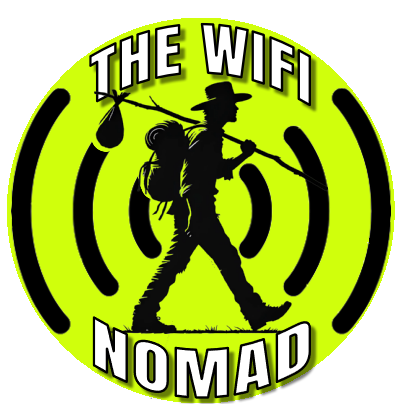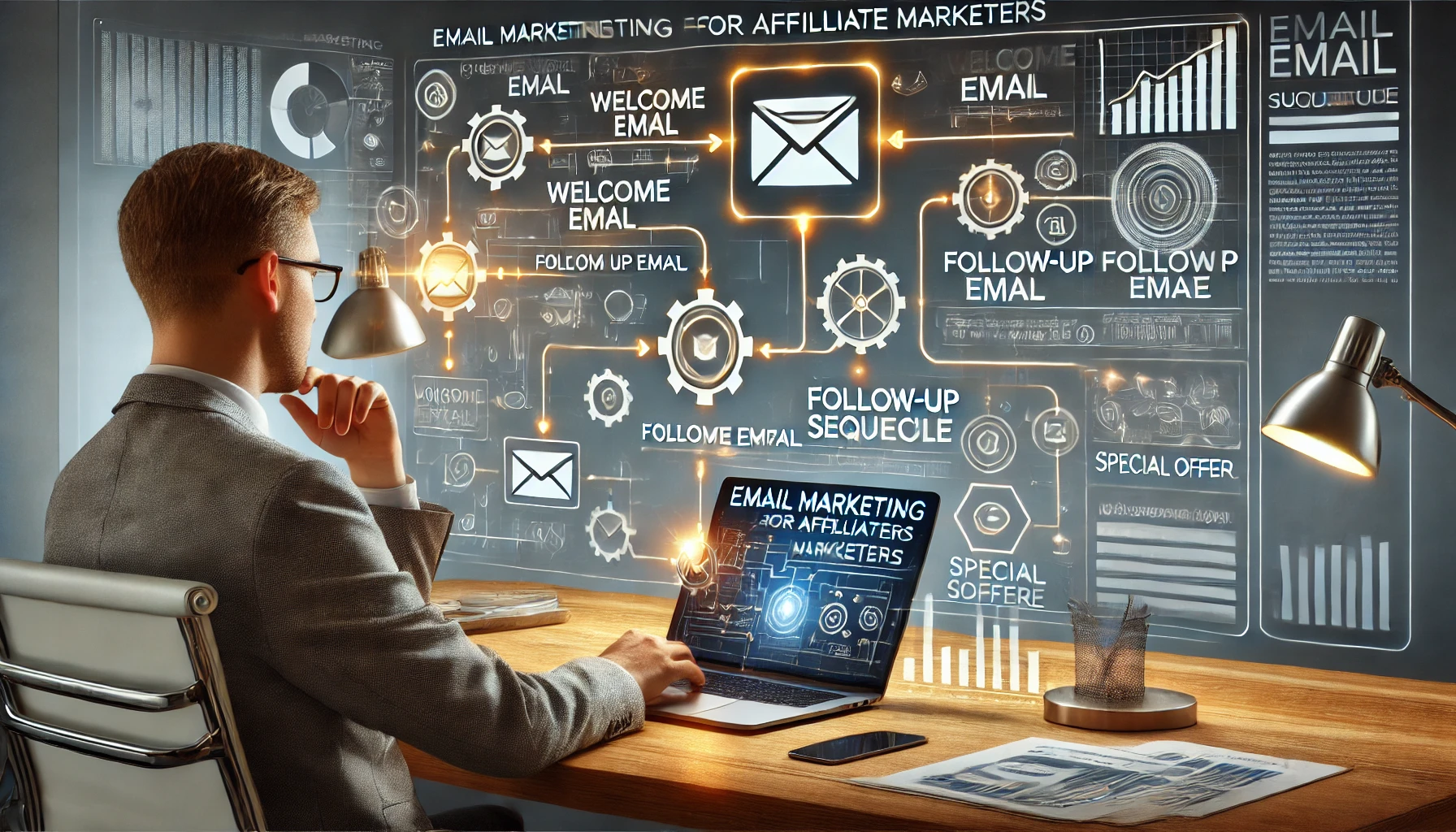I. Introduction
Picture this: You post regularly on social media, write thoughtful blog articles, and maybe even record the occasional YouTube video. Despite these efforts, you notice that conversions seem inconsistent—good one day and barely a trickle the next. What if there was a steady, reliable way to communicate with your audience that doesn’t rely on social media algorithms or fleeting trends? That’s precisely the role email marketing plays in an affiliate marketer’s arsenal.
Unlike social media platforms—where any post can be buried under an avalanche of new content—email marketing allows you to reach your audience directly in their inbox. By consistently delivering valuable insights, helpful tips, and well-timed offers, you can nurture genuine relationships that lead to higher conversions over time. In this article, we’ll dive into why email marketing matters so much for affiliate marketers, how to build an email list, and best practices for crafting effective email sequences that drive results. If you’re ready to establish a more predictable, engaged audience that trusts your recommendations, let’s get started!
II. Why Email Marketing Matters for Affiliate Marketers
A. Ownership of Audience
One of the biggest challenges in digital marketing is the constant change in social media algorithms and search engine updates. An active Facebook Group might suddenly see reduced reach due to policy changes, or an Instagram feed can be overshadowed by newer features like Reels. But with email marketing, you own your list—no external algorithm dictates who sees your messages. Each subscriber has willingly given you permission to contact them, indicating a stronger level of interest than a casual social media follower.
- Benefit: If a platform goes down or changes drastically (remember Vine?), you still retain a direct communication channel with your subscribers. This stability is priceless for affiliate marketers, as it ensures your promotional efforts won’t vanish overnight due to reasons beyond your control.
B. Higher Conversion Potential
Email marketing often boasts higher engagement rates than social media posts. While an excellent tweet might garner a decent click-through rate, a thoughtfully crafted email can yield even more significant interaction because subscribers are typically more invested in your content.
- Direct Channel: Email provides a private space where you can tailor messages, segment audiences, and add personalization—like a recipient’s name or referencing past interactions. This fosters a sense of intimacy and trust that’s hard to replicate on public forums. As a result, when you recommend an affiliate product that aligns with their interests, your subscribers are more likely to click and convert.
III. Building an Email List
1. Opt-In Forms & Placement
To leverage email marketing, you first need subscribers. Effective opt-in forms are key to growing your list:
- Strategic Placement: Don’t rely solely on a single “Subscribe” box in your sidebar. Experiment with exit-intent pop-ups (triggered when a visitor moves to close the page), embedded forms within blog posts, or a minimalistic sign-up prompt at the end of each article.
- Multiple Entry Points: If your site covers various subtopics, you might consider offering different opt-in forms. For instance, if you have categories like “Healthy Cooking” and “Home Workouts,” each can have a unique form with a relevant lead magnet.
2. Lead Magnets
A lead magnet is a free resource you offer in exchange for someone’s email address. Its value should be so compelling that visitors feel excited to sign up.
- Types: eBooks, cheat sheets, mini-courses, templates, or even short video tutorials. For example, if your niche is personal finance, a “7-Step Budget Planner” can be a perfect lead magnet.
- Niche Alignment: Ensure your lead magnet closely ties to your affiliate marketing niche. If you promote fitness products, a “Beginner’s Home Workout Guide” resonates more than a generic motivational quotes PDF. A targeted lead magnet also helps attract the right people—those genuinely interested in your specific content.
3. Landing Pages
While simple subscription forms can work, a dedicated landing page often converts better. A well-crafted landing page has:
- Clear Headline: Quickly states the value of the lead magnet or the benefit of joining your newsletter.
- Concise Copy: Explains how subscribers will benefit without overwhelming them.
- Strong Call to Action: A button or form that stands out visually, prompting visitors to sign up immediately.
- Mobile-Friendly Design: With many users browsing on phones, ensure your forms and layout look great on smaller screens.
IV. Crafting Effective Email Sequences
1. Welcome Series
Once a subscriber joins your list, the initial emails set the tone for your future relationship.
- Setting Expectations: The first email should thank them for signing up, deliver the promised lead magnet, and briefly explain what kind of content they’ll receive (e.g., weekly tips, product reviews, exclusive deals).
- Segmentation: If possible, ask new subscribers about their interests or main challenges. This can be as simple as a short poll or “reply to this email to tell me your biggest issue.” It helps you tailor future messages.
2. Value-Driven Emails
Not every email should be promotional. If you flood inboxes with constant product pushes, subscribers may tune you out or unsubscribe.
- Educational Approach: Offer how-to guides, success stories, or relevant news in your niche. For instance, if you’re in the travel affiliate space, share an insider tip on how to find discounted flights, then occasionally segue into recommending a travel credit card or booking platform.
- Storytelling & Personal Anecdotes: People love narratives—like “how I saved $500 in one week with these simple meal plans.” Stories create emotional engagement, making your message memorable.
3. Promotional Emails
Promotions are inevitable in affiliate marketing, but handle them wisely:
- Frequency: Sending multiple promotional emails in a short span can feel pushy. Space them out and intermix with value-driven content.
- Contextual Links: If you’re recommending a product, explain why it’s beneficial. Outline its features, share your personal experiences, or mention real-case scenarios. This approach resonates more than a blunt “buy this now.”
V. Best Practices for Affiliate Promotions via Email
1. Transparency & Disclosures
Email subscribers often trust you more than random website visitors. Don’t jeopardize that trust.
- Honesty: Always disclose that a link is affiliate-based. Phrases like “This is an affiliate link, so I may earn a small commission if you purchase, at no extra cost to you” maintain transparency.
- Regulatory Compliance: Many regions (like the U.S. with the FTC) require you to disclose affiliate relationships. Failure to do so can lead to legal troubles and erosion of credibility.
2. Product Relevance
Your affiliate recommendations should align with your subscribers’ interests or your overarching niche focus. Promoting a kitchen blender to a list that subscribed for digital marketing tips will confuse them, likely leading to high unsubscribe rates.
- Matching Offers to Behavior: If your email service provider (ESP) supports advanced tagging or segmentation, use it. For example, subscribers who clicked a link about “home workout routines” might be interested in fitness-related affiliate offers. Meanwhile, those reading about “vegan meal prep” might prefer plant-based recipe eBooks or cooking tools.
3. Timing & Urgency
Email marketing benefits greatly from well-timed promotions:
- Seasonal or Event-Based: Holidays like Black Friday or seasons like “back-to-school” can amplify conversions. Tailor your affiliate emails around these periods for maximum impact.
- Scarcity or Deadlines: If a merchant offers a limited-time discount, don’t hesitate to highlight it. However, use urgency ethically. Falsely claiming “limited stock” or “coupon ends tonight” when it doesn’t can backfire.
VI. Automation & Segmentation
1. Email Service Providers
Choosing the right ESP can make or break your affiliate strategy. Popular options include:
- Mailchimp: Known for its user-friendly interface; good for beginners, though advanced automation might feel limiting.
- ConvertKit: A favorite among bloggers and content creators due to robust tagging and automation features.
- AWeber: One of the original ESPs for affiliate marketers, offering straightforward tools and reliable deliverability.
- GetResponse or ActiveCampaign: Comprehensive platforms with powerful automation and advanced segmentation capabilities.
2. Segmentation Strategies
Segmenting your list means sending more targeted messages to specific subscriber groups. This approach can significantly boost open rates and conversions.
- Tagging: Tag subscribers who clicked on certain links, opened specific emails, or expressed interest in a subtopic. For instance, if you have multiple niche categories—like “budget travel” and “luxury getaways”—tagging helps ensure you only send relevant affiliate deals to each group.
- Behavior-Based: Some ESPs let you track user activity, such as clicking a link about home workouts. You might send follow-up emails about workout gear or supplements to that segment. Non-clickers might receive different content to try re-engaging them.
3. Workflow Examples
- Simple Funnel: A welcome email delivering your lead magnet, followed by a short series (2–3 emails) introducing your best blog posts or top affiliate recommendations. Great for those new to list-building.
- Advanced Automation: Once you have a larger list, you can implement more complex journeys—like sending a discounted affiliate offer if someone opens certain product-related emails but doesn’t purchase within a set timeframe.
VII. Measuring Success & Optimization
1. Key Metrics
- Open Rate: The percentage of recipients who open your email. A low open rate may indicate weak subject lines or list-building strategies that attract the wrong subscribers.
- Click-Through Rate (CTR): The percentage of those who open your email and click at least one link. A strong CTR suggests your email content resonates.
- Conversion Rate: Ultimately, how many subscribers who click an affiliate link end up buying. This is the real measure of success for affiliate emails.
2. A/B Testing
Testing small changes can reveal what resonates most:
- Subject Lines: Experiment with subject line length, emojis, or personalization. A subject line like “Katie, here’s the perfect winter workout plan” might outperform “Winter workout plan.”
- Email Copy & Layout: Some subscribers might prefer short, punchy paragraphs, while others respond to thorough explanations or bullet-point lists.
- Sending Times: Try different days (weekdays vs. weekends) or times (morning vs. evening) to see where engagement peaks.
3. Analyzing Subscriber Behavior
- Unsubscribes: A high unsubscribe rate might signal overly frequent promotions or irrelevant content.
- Dormant Subscribers: Over time, some subscribers stop opening your emails. Segment these “inactive” folks, and consider a re-engagement campaign—asking if they still want your content or offering them a special reason to return.
VIII. Action Steps (CTA Section)
Ready to integrate email marketing into your affiliate strategy? Here are specific tasks to get you moving:
- Set Up Your Opt-In Funnel
- Task: If you don’t have a lead magnet yet, brainstorm an idea that directly relates to your niche. Create or refine a dedicated landing page with clear benefits and a strong call-to-action for sign-ups.
- Draft a Welcome Sequence
- Task: Outline 2–3 emails that greet new subscribers, deliver your lead magnet, and introduce your brand’s purpose. Don’t forget to mention how often subscribers can expect emails from you.
- Plan an Affiliate Email
- Task: Choose a relevant product your subscribers might love. Write a promotional email, focusing on how the product solves a specific pain point. Be sure to include disclaimers and a personal note explaining why you recommend it.
- Teaser for Next Article
- Reason: Your email marketing engine will become even more potent when combined with advanced affiliate strategies like retargeting ads or building comprehensive sales funnels. Let readers know you’ll be covering that next, so they can see how email ties seamlessly into a bigger picture.
IX. Teaser for Next Article
“Up Next: Advanced Affiliate Strategies: Retargeting & Funnels”
Now that your email marketing groundwork is set, imagine amplifying those results using retargeting ads that follow subscribers online, plus funnel tactics that guide them from initial interest to final purchase. In Article #11, we’ll explore how to build advanced funnels and harness retargeting tools to boost your earnings further. It’s time to take your affiliate game to the next level—don’t miss it!
X. Conclusion
Email marketing stands out as one of the most reliable channels for affiliate marketers to build relationships and drive consistent conversions. Where social media and search algorithms can fluctuate, your email list remains a stable, direct line to people who genuinely want to hear from you. By offering valuable lead magnets, segmenting your subscribers based on their interests, and crafting sequences that balance education and promotion, you’ll nurture a loyal audience that appreciates your recommendations.
However, effective email marketing isn’t just about quick wins. It’s a long-term investment in trust and credibility. Take the time to write thoughtful emails that help, inspire, or entertain. Explain why you endorse certain products, and always be upfront about your affiliate relationships. This honesty, combined with a strategy that delivers the right offer to the right segment, can lead to higher click-through rates and conversions—and more importantly, a supportive community that sticks around for the journey.
As you refine your email approach, keep an eye on metrics like open rates, click-through rates, and unsubscribes. A willingness to test, analyze, and iterate is what separates top-performing affiliate marketers from those who stagnate. And remember: your email list is a living, breathing asset. Continually engage, update, and re-engage subscribers, and you’ll find your email campaigns evolving into a major revenue engine—one that’s far less susceptible to the ups and downs of external platforms.
Make today the day you either launch your first list or revitalize your existing one. Embrace consistent value, strategic promotions, and respectful communication, and watch how email marketing transforms your affiliate efforts into a more stable, profitable, and fulfilling enterprise.


